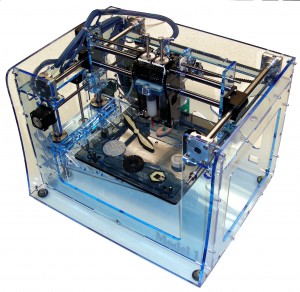In the last post, I looked at desktop fabricators and how they might impact the future of building props. In this post, I’ll check out what kind of new materials will change how we make props.
New Materials

One of the grandest changes in the way we make things came from the development of plastics during the last century. Consider the scope of plastics: Styrofoam, epoxy and epoxy resin, acrylic, Plexiglas, PVC pipe, styrene, nylon, kevlar, many laminates like Formica. Consider too the amount of adhesives we use based on plastics. PVA and most contact cements are plastic-based, while most tapes are at least backed in plastic. These days, a small prop shop can work with materials whose properties would have seemed miraculous even as late as World War I.
The downside of course is the ecological damage these materials cause, both in their production as well as their disposal. The future of making props will see a transition to more organic and biodegradable materials which can exhibit the same properties as synthetic plastics.
The first phase will see greater use of recycled materials. We are already beginning that phase. The field of props is almost defined by its reusing and repurposing of otherwise worthless cultural objects, and many of us build new props from material found in scrap bins or the trash. But we will also see more “new” materials made out of recycled bits. Many of our fiber and particle boards are made from the dust and scraps which are left over from processing lumber.
Instructables’ user Star Simpson has a guide on plastic smithing, where you can construct plastic objects out of old plastic bags.
We may also see a return to older, friendlier ways of constructing things. The Victorians made beautiful objects out of plastic milk and papier-mache, and there’s no reason these techniques cannot be used for the more temporary theatrical productions. You can find information on how to make your own plastic milk at Instructables, or at Joey Green’s Mad Scientist, which also has some fun facts about the stuff.
These kinds of things may be fun to experiment with, but may not be useful for more commercial shops. However, companies around the world are developing new materials based off of these homemade projects using organic and biodegradable products. It is worth it to keep on top of these products and try them out if you have the chance.
One website which showcases new materials with interesting materials is Transmaterial. Some products they’ve featured in the past include a polymer fiber which is five times stronger than steel. A company called Ecovative Design has developed an insulation foam substitute made out of mushrooms.
All in all, the explosion of materials technology we’ve seen in the last century or so shows no signs of slowing down. Our challenge now, as it always is, is finding the best materials to do our jobs. Are there any new materials you’ve been trying out lately?


